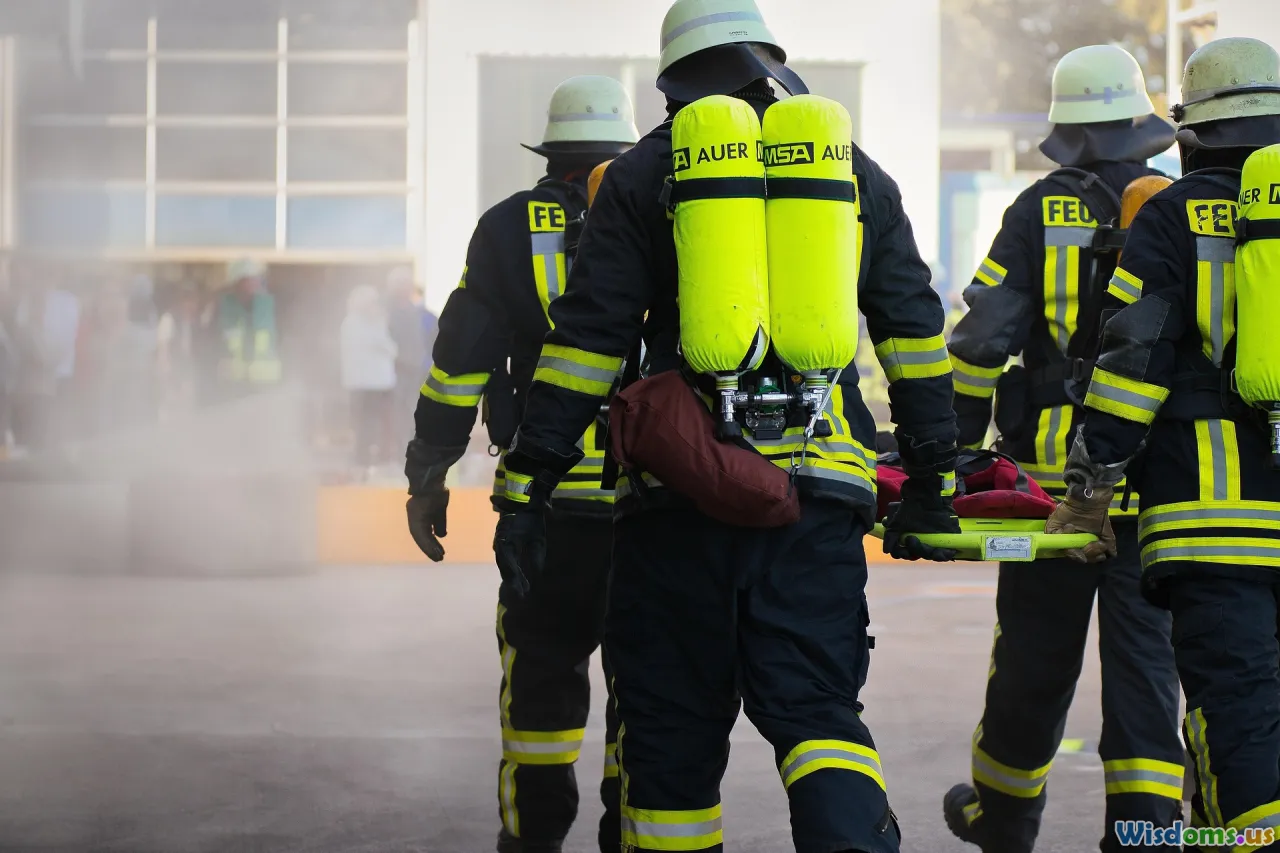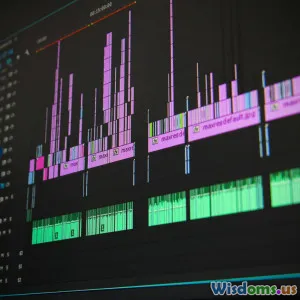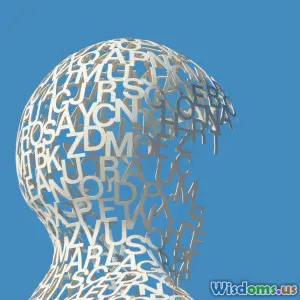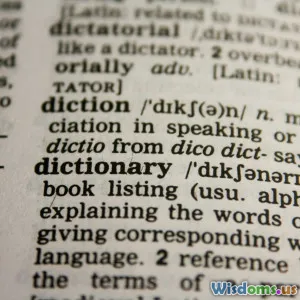
Interpreting Under Pressure Lessons From Crisis Situations
13 min read Explore strategies and lessons for accurate decision-making and interpretation under pressure, based on real crisis situations from various industries and fields. (0 Reviews)
Interpreting Under Pressure: Lessons From Crisis Situations
In moments of crisis, clear communication becomes a lifeline. Whether in war zones, natural disasters, emergency medical operations, or volatile political events, interpreters are the bridge that allows understanding and action when mistakes can be fatal. Professionals in these roles juggle a unique blend of skills: linguistic prowess, cultural dexterity, emotional resilience, and lightning-fast decision-making. What can we learn from these linguistic triathletes about performing under extreme pressure?
Essential Qualities of Crisis Interpreters

Navigating high-stakes environments demands much more than bridging languages. Crisis interpreters embody several core qualities:
- Resilience: Crisis interpreters frequently encounter traumatic situations—think medical interpreters in chaotic ERs or military interpreters negotiating between soldiers and civilians. Research published by the International Journal of Intercultural Relations (2021) underscores resilience as a predictive factor in interpreter success during high-pressure events.
- Rapid Cognitive Processing: Immediate comprehension and output are essential. In the 2011 Fukishima nuclear crisis, interpreters relayed evolving technical details in real-time to international responders, where any delay could hamper rescue efforts.
- Emotional Detachment—and Empathy: Emotional resilience doesn’t mean being cold. UK-based NHS staff survey that interpreters who display calm empathy build trust—yet they must also avoid taking on others’ trauma, a concept called "compassion fatigue."
Real-Life Example: The 2010 Haiti Earthquake
During the 2010 Haiti earthquake, global medical teams rushed in. Many patients only spoke Haitian Creole. Local interpreters supported medical teams, often interpreting shocking traumas while staying composed and focused—decisions could literally be the difference between life and death.
Types of Crisis Situations and the Interpreter's Role

Interpreters operate in a spectrum of crisis contexts. Each shapes their skills and ethical responsibilities:
Healthcare Emergencies
Medical interpreters often handle accident aftermaths, pandemics (like with COVID-19), and humanitarian medical responses. They're tasked with conveying a patient’s symptoms, delivering distressing news, and ensuring informed consent. Consider an interpreter working for Doctors Without Borders in an Ebola zone—precision and clarity prevent misdiagnoses, panic, and potential outbreaks.
Armed Conflict and Peacekeeping Missions
In war zones—like the NATO engagement in Afghanistan—local interpreters mediate negotiations, translate for embedded journalists, and connect aid workers to civilians. They must parse complex, context-laden dialogue and detect when "yes" doesn't always mean "yes.” In 2012, a Time magazine feature described how interpreters became targets, illustrating the additional personal risk they manage.
Disaster Relief and Humanitarian Operations
Natural disasters—earthquakes, hurricanes, tsunamis—bring international aid. Interpreters step in to disseminate warnings, explain logistics, or comfort victims. The 2004 Indian Ocean tsunami response saw teams relying on interpreters not only for linguistic accuracy but also cultural nuance when explaining why some aid protocol differed from local customs.
Techniques for Staying Accurate and Calm

How do interpreters keep their cool? Here are tactics refined in the crucible of emergencies:
- Chunking Information: Breaking down speech into "manageable chunks" allows interpreters to process, store, and relay messages accurately, even under cognitive overload. UN interpreters often train in this skill more rigorously than in peacetime settings.
- Controlled Breathing and Self-Monitoring: Stress triggers errors. Interpreters like Valentina Tramontano, who worked after the 2009 L’Aquila earthquake, report using conscious breathing and self-assessment during breaks, re-centering themselves between interactions.
- Pre-Briefing and Terminology Preparedness: Successful crisis interpreters receive field briefings and glossaries—these minimize uncertainty. In health emergencies like the Zika outbreak, the CDC provided interpreters with daily terminology updates to maintain accuracy.
Tip: Aspiring interpreters should simulate high-stress scenarios during training—such as timed, chaotic role-plays—to develop composure before facing real conferences or emergencies.
Ethics: The Hidden Minefield

Crisis situations can muddy the ethical waters. Interpreters may be tempted—or pressured—to edit, omit, or sugar-coat messages for perceived greater good. However, the Code of Ethics for most professional interpreter associations holds transparency and faithfulness paramount.
Ethical Dilemmas Include:
- Neutrality vs. Advocacy: Should an interpreter intervene if they witness abuse (e.g., during refugee screenings)?
- Reporting Threats: Is it ethical to relay everything if it implicates someone's safety?
The 2015 European refugee crisis highlighted these dilemmas. In Greece, interpreters sometimes balanced on a knife-edge: protecting client privacy, but also triggering aid or intervention when abuse surfaced. Association of Language Companies (ALC) guidelines recommend: always disclose ethical challenges to a supervisor when possible, and never act independently.
The Psychological Toll and Self-Care

Regular exposure to suffering and chaos extracts a price, even from the toughest interpreters. Symptoms of vicarious trauma and burnout include insomnia, detachment, and decreased job satisfaction.
Support Structures That Help:
- Peer Debriefing: Humanitarian groups like Médecins sans Frontières organize peer-support debriefings after major incidents, giving interpreters a safe space to process experiences.
- Professional Counseling: The U.S. Department of State provides crisis-counseling resources for local hires after traumatic assignments abroad.
- Structured Rest: Rotational shifts and forced downtime are proven ways to break the cycle of chronic stress, as seen in UN peacekeeping interpreter rotations.
Technology: Both Asset and Obstacle

New technologies—remote video interpreting, instant translation apps—have expanded crisis interpreter capacity, especially where traveling to the hot zone isn’t viable. During the COVID-19 pandemic, telehealth interpreting exploded, ensuring multilingual families still had access to care without crowding hospitals.
Yet, technology is no panacea. High-stress environments often suffer from spotty connections and require "human" interpretation of subtext, suspicion, or trauma—nuances AI still struggles with. For instance, robot translators missed crucial emotional cues during initial Afghanistan evacuation video calls, making clear why human professionals remain indispensable.
Actionable Insights for Linguists and Crisis Leaders

Turning hard-won lessons into actionable takeaways can smooth the path for budding interpreters and those managing crisis communications.
For Interpreters:
- Situational Awareness Matters: Understand more than the literal words; grasp context, emotional state, and power balances. If unsure, ask clarifying questions during briefings.
- Know Your Limits: If trauma begins to bleed into personal life, seek help early—don’t "push through" endlessly.
- Specialize When Possible: Mastering terminology (medical, military, humanitarian) increases efficiency and confidence under fire.
For Crisis Managers/Leaders:
- Include Interpreters Early: Brief them thoroughly on scope, objectives, and risks, not just job details. Early inclusion leads to better outcomes.
- Empower with Tools and Rest: Ensure interpreters have access to support, clear reporting channels for ethical dilemmas, and protected time-off.
- Recognize Their Expertise: Interpreters are not machines—they are cultural advisers and psychological barometers. Treat their feedback as valuable intelligence.
Learning From the Field: Key Stories

The best lessons arise from lived experience. Consider the experience of humanitarian interpreter Maria Gonçalves during the 2019 Cyclone Idai in Mozambique. Unanticipated tribal language barriers among survivors threatened to upend vaccine distribution plans. Maria recruited local schoolteachers, built an ad-hoc interpreting team, and used handwritten signs to fill gaps. Her flexibility, deep community connections, and improvisational skills ensured vital communication and saved countless lives.
Similarly, in the aftermath of terrorist attacks in Paris in 2015, interpreters were embedded within communication hubs, relaying information not only to authorities but also to anxious families scattered internationally. The ability to maintain calm, repeat information as often as needed, and judge the emotional needs on the fly highlighted interpreters’ value beyond simple word-for-word translation.
Building Future Readiness: Training for the Unpredictable

Many universities and interpreter programs now incorporate simulation-based learning, immersing students in artificial crisis contexts. The European Masters in Conference Interpreting features modules on "interpreting in conflict," requiring students to navigate tense mock negotiations with actors portraying unpredictable stakeholders.
Professional agencies are also investing in crisis communications boot camps. The Red Cross and NATO regularly run workshops on real-time disaster interpretation, addressing not only language but also cultural sensitivity, nonverbal communication, and assessing emotional undercurrents.
A notable example is the Japan Disaster Medical Assistance Team’s 2022 interpreter training, which pairs linguistic drills with on-the-fly role assignments, preparing interpreters to jump between technical jargon, survivor first aid, and media briefings in one day.
In Every Crisis, Words Matter
Crisis interpreting brings to light the intricate intersection of language, culture, politics, and resilience. The real-world lessons harvested from disaster zones and high-risk environments can aid not just interpreters, but anyone striving to communicate clearly under pressure: stay informed, be adaptable, support each other, and never overlook the human heart behind every message.
Drawing on their blend of self-control and cultural wisdom, crisis interpreters remind us that, even in chaos, it is our attempt to truly understand one another that lays the bedrock for survival and hope.
Rate the Post
User Reviews
Other posts in Stress Management
Popular Posts


















